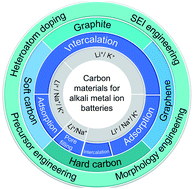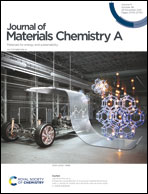A comparative overview of carbon anodes for nonaqueous alkali metal-ion batteries
Abstract
Since the commercialization of the graphite anode by Sony in 1991, extensive research findings have demonstrated that carbon-based materials are promising candidates for lithium-ion batteries (LIBs) and “post lithium-ion batteries,” sodium-ion batteries (SIBs)/potassium-ion batteries (PIBs). These three alkali-ion batteries consist of similar components and electrochemical reaction mechanisms in carbon materials, while some significant difference proved to exist in their electrochemical storage behaviors. This review presents a comprehensive comparison of Li+/Na+/K+ storage behavior in carbon anode materials (graphite, graphene, soft carbon and hard carbon) in view of the possible storage mechanism and favorable strategies to enhance their electrochemical performance. Hence, a better understanding of the relationship between the structure, charge storage mechanism and electrochemical behavior of carbon materials is provided. Finally, critical issues and perspectives are discussed to demonstrate prospective research directions for carbon anode materials in these alkali metal-ion batteries.

- This article is part of the themed collection: Journal of Materials Chemistry A Recent Review Articles


 Please wait while we load your content...
Please wait while we load your content...